#hototogisu
Text
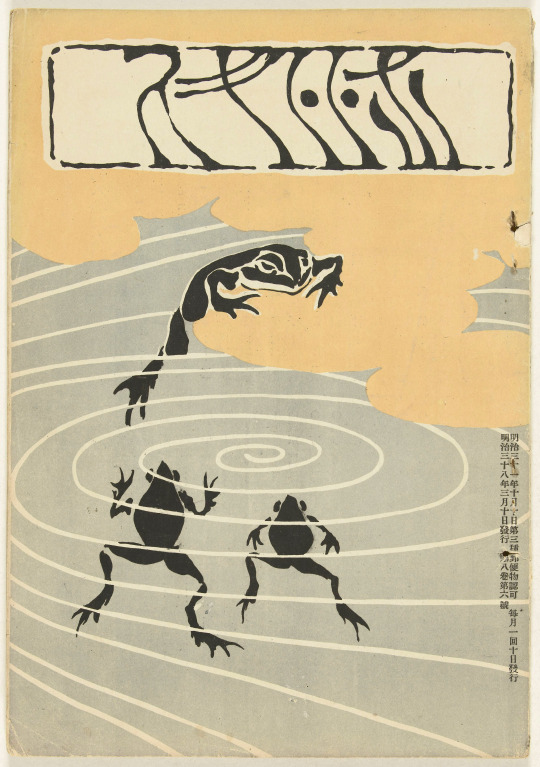
Part of : ホトトギス Kleine koekoek (Gackelkuckuck, Lesser Cuckoo), Hashiguchi Goyô, 1904 - 1905
print maker: Asai Chû / print maker: Hashiguchi Goyô
Number 6 of volume 8 (March 1905) of the literary monthly Hototogisu: cover with black frogs in gray water and orange water lily leaves. letterpress printing / color woodcut
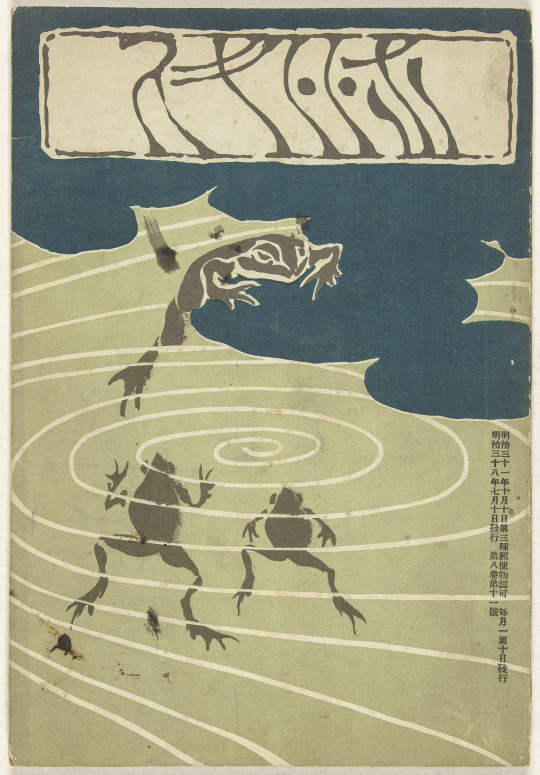
Number 11 of volume 8 (July 1905) of the literary monthly ホトトギス Hototogisu: cover with gray frogs in green water and dark green water lily leaves. letterpress printing / color woodcut
#Hototogisu#1900s#illustration#frogs#water plants#pond#Kleine koekoek#rijksmuseum#Asai Chu#Hashiguchi Goyo#japanese artist#japanese art#Gackelkuckuck#Lesser Cuckoo#Cucut menut#Cuckoo#ホトトギス
209 notes
·
View notes
Text
Winter bee walks without dying – Kijo Murakami:村上鬼城(Haiku)

Kijo Murakami was a haiku poet who lived from 1865 to 1938. He was recognized by Kyoshi Takahama, the leader of the monthly haiku magazine "Hototogisu," and was a great haiku poet who achieved the feat of decorating the front page of the magazine for several years in the Taisho period. A typical example of his haiku is the one at the beginning of this blog.
Kijo Murakami has many haiku that stare at animals and plants from a unique perspective. just to list a few:
1 @ Winter bee walks without dying
冬蜂の死にどころなく歩きけり
2 @ I wonder if it's a waste silkworm crawling up in the summer grass
夏草に這ひ上りたる捨蚕かな
3 @ Spring pasted and the blind dog became a mother
行く春や親になりたる盲犬
1@ has a lot of pictures of him, Kijo Murakami's state of life. He was deaf and had troubles in his daily life, and even though he had intended to be a good soldier for his country, he was unable to do so because of his deafness and became a scribe. I was doing It is certain that he felt pity that the bee, a soldier, was not given a place to die in the cold winter. It's as if this Tohachi is himself... However, according to the book I'm reading, "Kijo Murakami: Interpretation and Appreciation" (Bakugai Nakazato), this phrase expresses pity or self-pity. From what I read, the haiku poet is in a position overlooking these two (bee and Kijo), and the haiku is produced.
2 @ is a sericulture farmer, and he couldn't get the mulberry leaves in time, so he threw away his precious silkworms, but the silkworms have the will to live and climb up on the grass... Kijo Murakami made him climb. Mr. Nakazato says that it is the person's power or imagination.
3@. Blind dogs are also objects of pity, but this should be interpreted like 1@.
4 @ Fields on that poeple work either alive or dead for a long time
生きかはり死にかはりして打つ田かな
This phrase is very interesting. The ancestral farm work that has been done for generations appears in my eyelids as an eternal image that transcends time. A haiku is essentially a snapshot of a photograph, but this haiku transcends time and space and is symbolized.
#Winter bee walks without dying#Kijo Murakami#村上鬼城#haiku#rei morishita#Hototogisu#Kyoshi Takahama#stare at animals and plants from a unique perspective
3 notes
·
View notes
Text

Inktober 2023 // Day 8: Toad
Tricyrtis hirta, the toad lily or hairy toad lily, is a Japanese species of hardy herbaceous perennial plant in the lily family. It is found growing on shaded rocky cliffs and stream banks in central and southern Japan. Leaves are large and wide, clasping around the stem. The flowers are whitish to pale purple with dark purple spots.
Join my Patreon for lineart, .psd files, and hi-res images for download! If you're interested in following me for my art, consider following me on social media:
instagram | Deviantart | Patreon | Etsy | Facebook
#illustration#artistsoninstagram#inktober#art#artists on tumblr#toad lily#lily#lillies#flora#floral#horticulture#botany#herbology#ほととぎすそう#hototogisu#Inktober 2023
0 notes
Text
Nope, I can't 🙃
Every time I see Mikazuki my kokoro shatters 😢 I curse "Hiden Yui no Me no Hototogisu" and the scriptwriter of that stage play with all my being

#touken ranbu#touken ranbu stage play#touken ranbu kai#Kyoden Moyuru Honnouji#hiden yui no me no hototogisu#mikazuki munechika#yamanbagiri kunihiro#hiroki suzuki#aramaki yoshihiko#tomoaki maeno#toriumi kousuke
3 notes
·
View notes
Text
Kelezatan Unik Tokyo: 3 Restoran Ramen Tokyo dengan Bintang Michelin!
Wisata Kuliner Jepang – Ada Restoran Ramen Tokyo yang memiliki bintang Michelin dan juga harganya cukup terjangkau, dengan sepiring mie yang mendapat peringkat tertinggi harganya sekitar ¥1.000.
Photo: Ginza HachigoGinza Hachigo ramen/timeout.com
Simak Juga : Rahasia Kelezatan Oden: Apa Itu dan Bagaimana Menikmati Oden Dengan Baik?
Meskipun Jepang dikenal sebagai tanah ramen, Anda mungkin…

View On WordPress
0 notes
Text
None Of You Know What Haiku Are
I'm going to preface this by saying that i am not an expert in ANY form of poetry, just an enthusiast. Also, this post is... really long. Too long? Definitely too long. Whoops! I love poetry.
If you ask most English-speaking people (or haiku-bot) what a haiku is, they would probably say that it's a form of poetry that has 3 lines, with 5, and then 7, and then 5 syllables in them. That's certainly what I was taught in school when we did our scant poetry unit, but since... idk elementary school when I learned that, I've learned that that's actually a pretty inaccurate definition of haiku. And I think that inaccurate definition is a big part of why most people (myself included until relatively recently!) think that haiku are kind of... dumb? unimpressive? simple and boring? I mean, if you can just put any words with the right number of syllables into 3 lines, what makes it special?
Well, let me get into why the 5-7-5 understanding of haiku is wrong, and also what makes haiku so special (with examples)!
First of all, Japanese doesn't have syllables! There's a few different names for what phonetic units actually make up the language- In Japanese, they're called "On" (音), which translates to "sound", although English-language linguists often call it a "mora" (μ), which (quoting from Wikipedia here) "is a basic timing unit in the phonology of some spoken languages, equal to or shorter than a syllable." (x) "Oh" is one syllable, and also one mora, whereas "Oi" has one syllable, but two moras. "Ba" has one mora, "Baa" has two moras, etc. In English, we would say that a haiku is made up of three lines, with 5-7-5 syllables in them, 17 syllables total. In Japanese, that would be 17 sounds.
For an example of the difference, the word "haiku", in English, has 2 syllables (hai-ku), but in Japanese, はいく has 3 sounds (ha-i-ku). "Christmas" has 2 syllables, but in Japanese, "クリスマス" (ku-ri-su-ma-su) is 5 sounds! that's a while line on its own! Sometimes the syllables are the same as the sounds ("sushi" is two syllables, and すし is two sounds), but sometimes they're very different.
In addition, words in Japanese are frequently longer than their English equivalents. For example, the word "cuckoo" in Japanese is "ほととぎす" (hototogisu).
Now, I'm sure you're all very impressed at how I can use an English to Japanese dictionary (thank you, my mother is proud), but what does any of this matter? So two languages are different. How does that impact our understanding of haiku?
Well, if you think about the fact that Japanese words are frequently longer than English words, AND that Japanese counts sounds and not syllables, you can see how, "based purely on a 17-syllable counting method, a poet writing in English could easily slip in enough words for two haiku in Japanese” (quote from Grit, Grace, and Gold: Haiku Celebrating the Sports of Summer by Kit Pancoast Nagamura). If you're writing a poem using 17 English syllables, you are writing significantly more content than is in an authentic Japanese haiku.
(Also not all Japanese haiku are 17 sounds at all. It's really more of a guideline.)
Focusing on the 5-7-5 form leads to ignoring other strategies/common conventions of haiku, which personally, I think are more interesting! Two of the big ones are kigo, a season word, and kireji, a cutting word.
Kigo are words/phrases/images associated with a particular season, like snow for winter, or cherry blossoms for spring. In Japan, they actually publish reference books of kigo called saijiki, which is basically like a dictionary or almanac of kigo, describing the meaning, providing a list of related words, and some haiku that use that kigo. Using a a particular kigo both grounds the haiku in a particular time, but also alludes to other haiku that have used the same one.
Kireji is a thing that doesn't easily translate to English, but it's almost like a spoken piece of punctuation, separating the haiku into two parts/images that resonate with and add depth to each other. Some examples of kireji would be "ya", "keri", and "kana." Here's kireji in action in one of the most famous haiku:
古池や 蛙飛び込む 水の音
(Furu ike ya kawazu tobikomu mizu no oto)
(The old pond —
A frog jumps in
The sound of the water.)
You can see the kireji at the end of the first line- 古池や literally translates to "old pond ya". The "ya" doesn't have linguistic meaning, but it denotes the separation between the two focuses of the haiku. First, we are picturing a pond. It's old, mature. The water is still. And then there's a frog! It's spring and he's fresh and new to the world! He jumps into the pond and goes "splash"! Wowie! When I say "cutting word", instead of say, a knife cutting, I like to imagine a film cut. The camera shows the pond, and then it cuts to the frog who jumps in.
English doesn't really have a version of this, at least not one that's spoken, but in English language haiku, people will frequently use a dash or an ellipses to fill the same role.
Format aside, there are also some conventions of the actual content, too. They frequently focus on nature, and are generally use direct language without metaphor. They use concrete images without judgement or analysis, inviting the reader to step into their shoes and imagine how they'd feel in the situation. It's not about describing how you feel, so much as it's about describing what made you feel.
Now, let's put it all together, looking at a haiku written Yosa Buson around 1760 (translated by Harold G. Henderson)
The piercing chill I feel:
my dead wife's comb, in our bedroom,
under my heel
We've got our kigo with "the piercing chill." We read that, and we imagine it's probably winter. It's cold, and the kind of cold wind that cuts through you. There's our kireji- this translation uses a colon to differentiate our two images: the piercing chill, and the poet stepping on his dead wife's comb. There's no descriptions of what the poet is feeling, but you can imagine stepping into his shoes. You can imagine the pain he's experiencing in that moment on your own.
"But tumblr user corvidcall!" I hear you say, "All the examples you've used so far are Japanese haiku that have been translated! Are you implying that it's impossible for a good haiku to be written in English?" NO!!!!! I love English haiku! Here's a good example, which won first place in the 2000 Henderson haiku contest, sponsored by the Haiku Society of America:
meteor shower . . .
a gentle wave
wets our sandals
When you read this one, can you imagine being in the poet's place? Do you feel the surprise as the tide comes in? Do you feel the summer-ness of the moment? Haiku are about describing things with the senses, and how you take in the world around you. In a way, it's like the poet is only setting a scene, which you inhabit and fill with meaning based on your own experiences. You and I are imagining different beaches, different waves, different people that make up the "our" it mentioned.
"Do I HAVE to include all these things when I write haiku? If I include all these things, does that mean my haiku will be good?" I mean, I don't know. What colors make up a good painting? What scenes make up a good play? It's a creative medium, and nobody can really tell you you can't experiment with form. Certainly not me! But I think it's important to know what the conventions of the form are, so you can appreciate good examples of it, and so you can know what you're actually experimenting with. And I mean... I'm not the poetry cops. But if you're not interested in engaging with the actual conventions and limitations of the form, then why are you even using that form?
I'll leave you with one more English language haiku, which is probably my favorite haiku ever. It was written by Tom Bierovic, and won first place at the 2021 Haiku Society of America Haiku Awards
a year at most . . .
we pretend to watch
the hummingbirds
Sources: (x) (x) (x) (x) (x) (x)
Further reading:
Forms in English Haiku by Keiko Imaoka
Haiku: A Whole Lot More Than 5-7-5 by Jack
How to Write a Bad Haiku by KrisL
Haiku Are Not a Joke: A Plea from a Poet Who Has Had It Up to Here by Sandra Simpson
Haiku Checklist by Katherine Raine
#poetry#haiku#writing#literature#anime life#long post#i want to apologize but i had to get something off my chest#and the thing was. i love haiku#and when i see posts on here about haiku. i get so angy.#well ok i really get more disappointed bc nobody is really engaging with the form on its own terms#anyway i hope you enjoy some of my favorite haiku because theyre in there!!!!!#i didnt really get into the history of haiku. and i also did not get into why i got really into it#but i will say that i was really inspired by Jacob Geller's video A Thousand Ways of Seeing a Forest#which is a lot about translation#(which i mean. as an interpreter AND a poetry-enjoyer. really appealed to me lol)
10K notes
·
View notes
Text
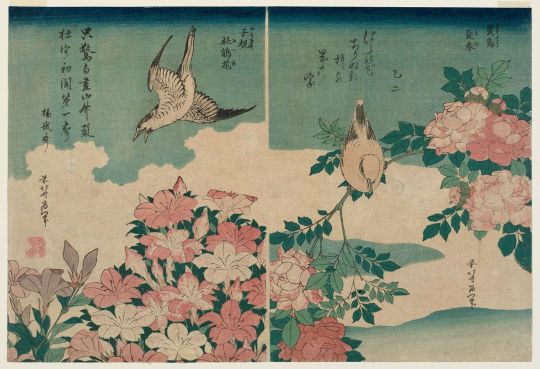
Katsushika Hokusai
Warbler and Roses (Kôchô, bara; right); Cuckoo and Azaleas (Hototogisu, satsuki; left), from an untitled series known as Small Flowers
1834
#katsushika hokusai#hokusai#flowers#japanese art#woodblock print#ukiyoe#color woodblock#japanese#woodcut
346 notes
·
View notes
Text

It is located in Myojin-cho, Hachioji-shi, Tokyo
Hototogisu becomes a coffee shop during the day and a bar at night.
It is a stylish shop in a residential area.
東京都八王子市明神町にある
昼は喫茶店、夜はバーになるホトトギス。
住宅地にあるお洒落なお店です。
#tokyo#japan trip#japan photos#tokyo tour#japan vacation#nature#landscape#japan#japanese#japan travel
16 notes
·
View notes
Text
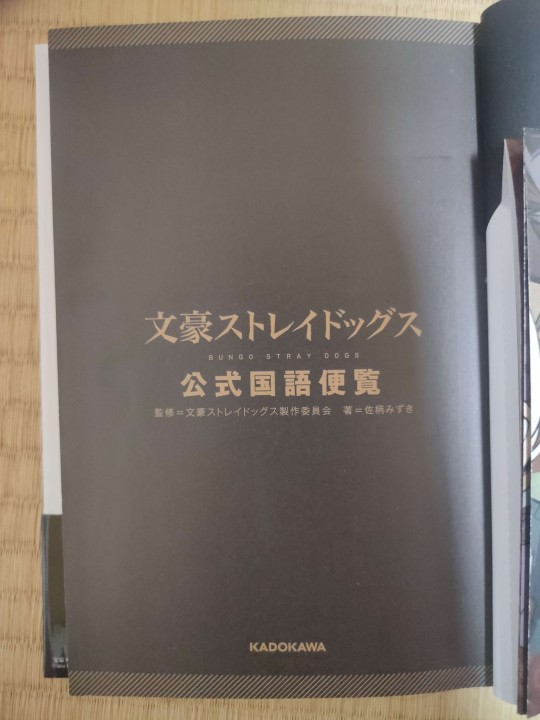
The Bungō Stray Dogs handbook, the one about the irl authors, have been fully photographed! It's photographed and not scanned because the book is with my JP friend and it'll be a while before I have it in hand :')
Some upcoming stuff I'm working on
List of works referenced in the series (close to done)
RL trivia page (far from done)
Article on Takahama Kyoshi and Hototogisu (far from done)
74 notes
·
View notes
Text
Hakuoki Ginsei Shinpachi Short Story
This story was originally published in B's-LOG 2020年6月号.
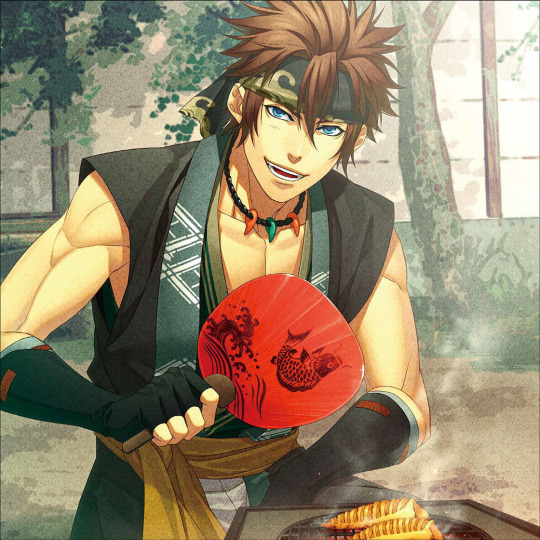
Hakuoki Tsukikage B’s Log 2020年6月 Shinpachi Short Story “Uzuki (卯月)” [which means the 4th month of the lunar calendar]
Translation by KumoriYami
"An eye for green leaves,
The Mountain Cuckoo
The First Bonito [*see endnotes]"
As I suddenly remembered these five-seven-five stanzas , I stopped the hand which was cutting vegetables to recite it.
The stimulating aroma of food filled the kitchen in the daytime.
In response to my sudden statement, Chizuru, who was dissolving miso paste in that moment next to me, was startled.
"Those sentences just now, have you heard them before?"
"I've heard it in Edo. The vibrant green leaves, the chirping cuckoos, and the leaves are also vibrant, the cuckoos are chirping, and the season for catching bonito [type of fish]—That's a haiku that celebrates spring, right?"
"That's right!
"If you're from Edo, you can't help mentioning it, because it's a symbol of spring [refers to the f! Speaking of which…"
I clenched my fist at Chizuru, who still seemed confused, and spoke.
"Chizuru! I believe we should have the first bonito now!"
".......Huh?......"
"Fortunately, I don't have any patrol work today. If not at noon, can we have it at dinner/I can't have dinner without lunch, right [not sure bout the latter sentence]?
After speaking enthusiastically about my passion for bonito.
Chizuru-chan looked at me with a troubled expression in response to my wilful words.
"Um, Well, I understand how you feel... but if you were in Edo, it might be possible, but it's hard to find bonito on the streets of Kyoto..."
I understand your feelings… but, while that would be fine in Edo, it's extremely difficult to buy bonito on the streets of Kyoto..."
"That's right..."
I forgot that Kyoto was located far inland and distant from the sea, and that there were only rivers and lakes, like Lake Biwa, and bonito cannot live in rivers…
"I think it'd be hard to find bonito, but what about something else? I'd like to do that to help you."
After accepting Chizuru-chan's proposal, we began searching separately.
"Yo, Sano! I'm trying to find a first of the season [the tl I'm referencing just says "first thing" but i modified my translation based on what what "hatsumono" is, which usually refers to the first of the season for produce, catch (as in fish), etc.], so can't you provide some sake?"
"What first of the season. We drink all year round, right?"
"Hijikata-san, can you give me for the first of the season?"
"I don't have a first of the season… right, I can give you a lecture on your lifestyle."
"Uh... you're always unromantic…"
After leaving headquarters, and wandering around the streets, I had absolutely no results. Should I just give up?
"Nagakura-san, I found a first of the season!"
The one who saved me walked like a goddess. Her hands lifted the bamboo shoots in her hands, which had been dirtied by soil. Her cute face was covered in dirt/mud.
I suddenly understood how much she had gone through, and I couldn't help but feel warmth swelling up inside my heart.
Chizuru-chan grilled the bamboo shoots she found as a first of the season.
Each time they were grilled, a fragrance wafted over. It really was a good choice.
"But, why did you say you wanted the first of the season?"
I scratched my face
With her asking that, I scratched my face.
"…Uh, that was… some people say that eating the first of the season can extend your life by 75 days. In this sort of life, when you don't know when you'll die, I hope everyone can eat this."
She seemed to understand my answer and smiled.
"...Nagakura-san, you're very kind/gentle."
"Th-That's right! Then I'll grill these first and give them to everyone! I really want to see their surprised faces!"
---end---
The haiku at the start of the story is by Yamaguchi Sodo, which was written in Edo, 1678 and reads:
目に青葉 (Me ni aoba)
山ほととぎす(yama hototogisu)
初鰹 (hatsu-gatsuo)
The printed story contains those exact lines but I copied the English translation and took the information on it from : https://matsuobashohaiku.home.blog/2021/07/06/the-signs-of-summer-1678/
56 notes
·
View notes
Text
Taichihaya week 2023 poems
There are multiple translations of the Hyakunin Isshu poems.
Here there are some of the translations of the poems that are prompts for this year's week.
I'll go in order of day by day of Taichihaya week.
Poem 81: Ho
Hototogisu
Nakitsuru kata wo
Nagamureba
Tada ariake no
Tsuki zo nokoreru


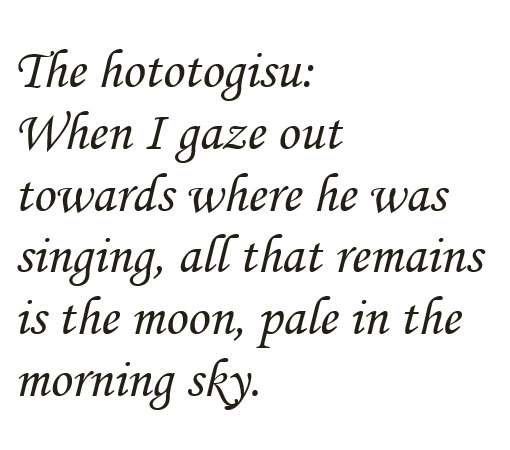
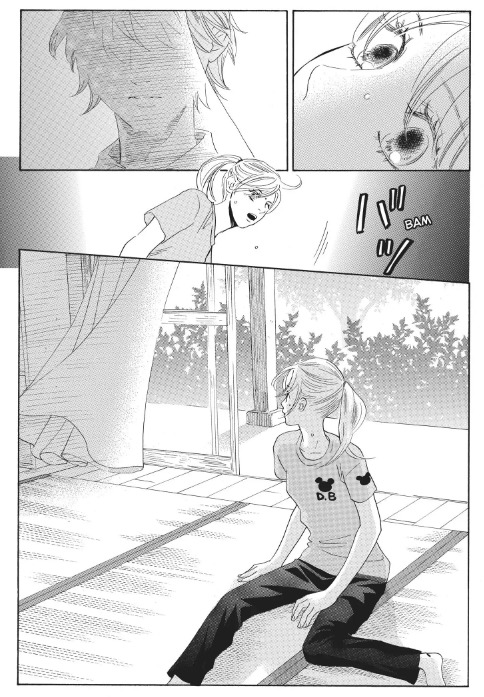
Poem 46: Yura
Yura no to wo
Wataru funa-bito
Kaji-wo tae
Yukue mo shiranu
Koi no michi kana
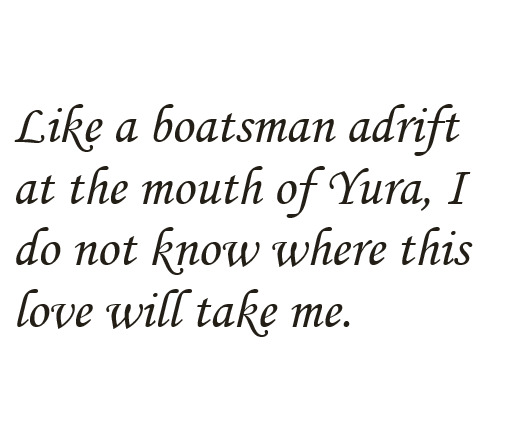
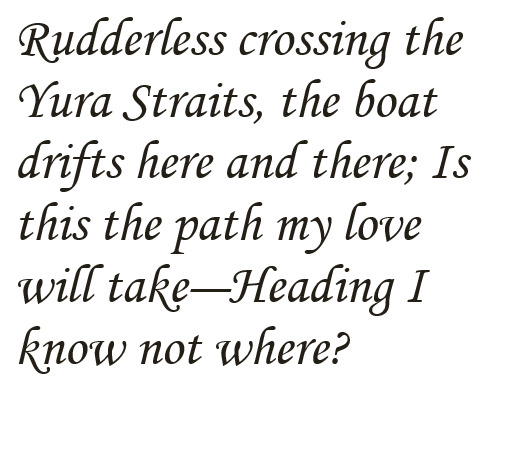
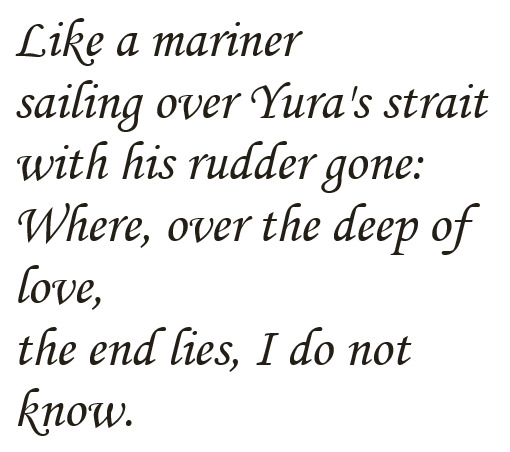

Poem 15: Kimi ga tame ha
Kimi ga tame
Haru no no ni idete
Wakana tsumu
Wa ga koromode ni
Yuki wa furitsutsu

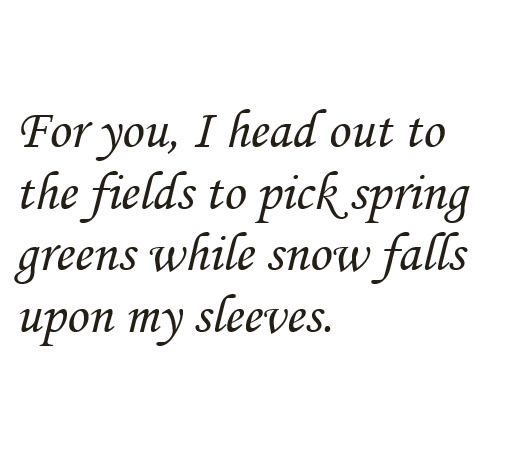
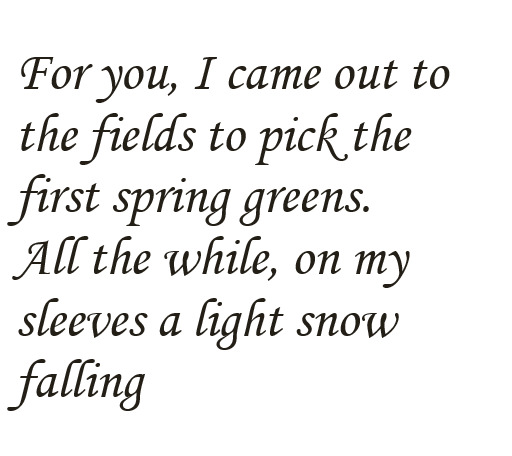

Poem 34: Tare
Tare wo ka mo
shiru hito ni sen
takasago no
matsu mo mukashi no
tomo naranakuni
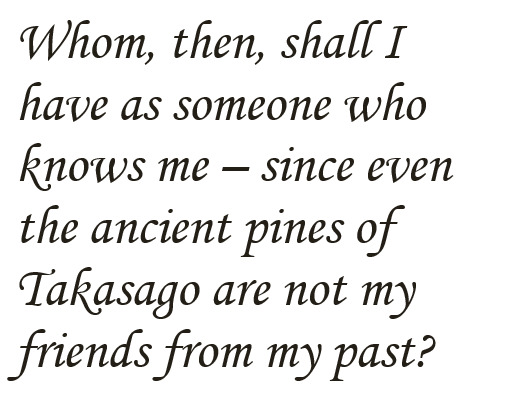
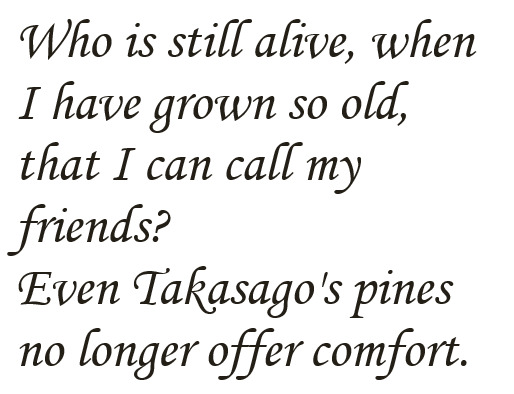


Poem 18: Su
Sumi no e no
Kishi ni yoru nami
Yoru sae ya
Yume no kayoi ji
Hito me yoku ran
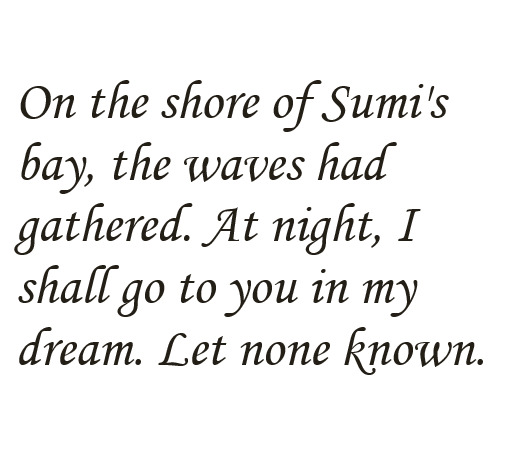

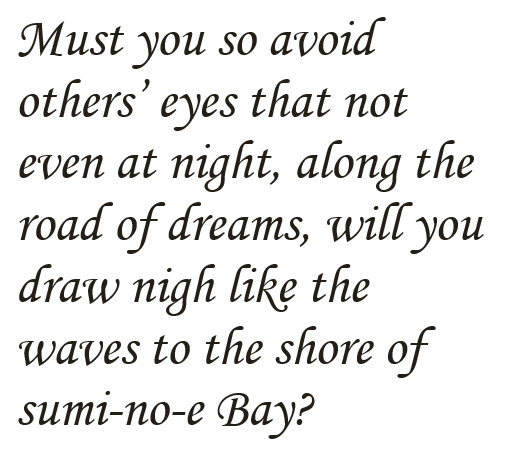

Poem 51: Kaku
Kaku to dani
Eyawa ibuki no
Sashimogusa
Sashimo shiraji na
Moyuru omoi o
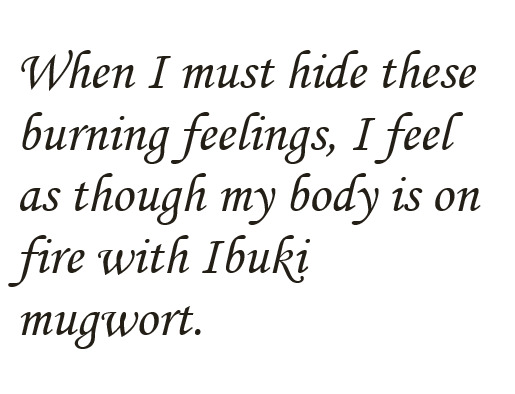
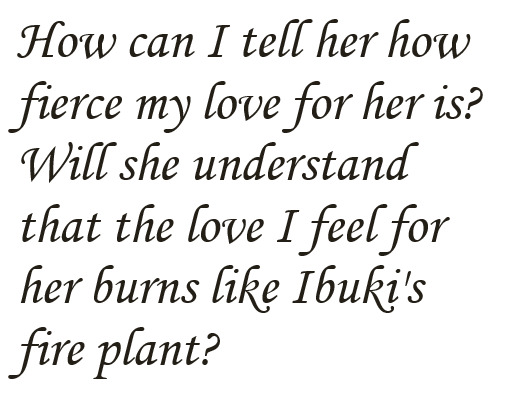


Poem 13: Tsuku
Tsukuba ne no
Mine yori otsuru
Minano-gawa
Koi zo tsumorite
Fuchi to nari nuru

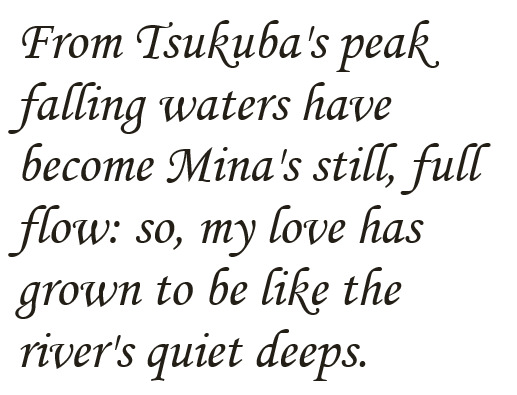
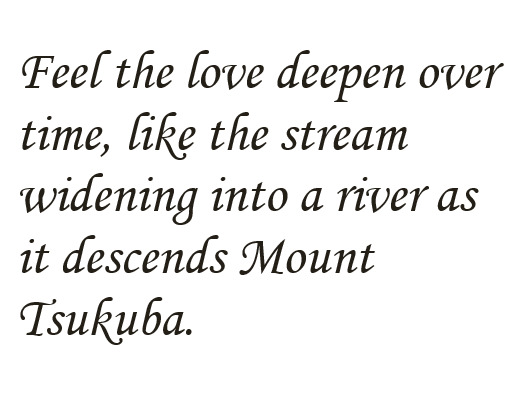
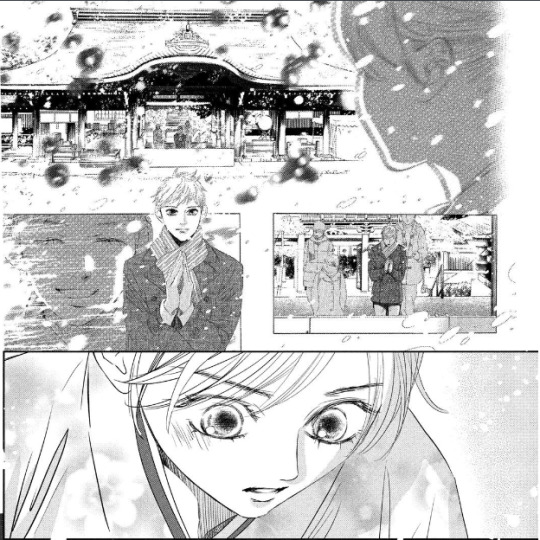
There are more poems associated with Taichihaya; we had to narrow them down to only 7. But another poem can also be used on day 7 with a "free prompt".
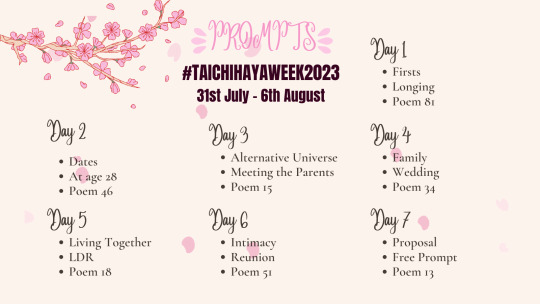
Other translations and other poems can be found here:
Also, I used some panels for each poem here. But their relation is not unique to those panels; each poem extends to way more moments and aspects of taichihaya.
44 notes
·
View notes
Text
Today's Haiku with Picture 177
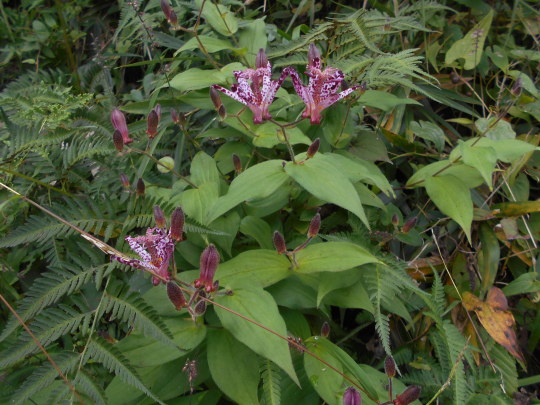
Hototogisu
becoming wild grass
Compete for bewitchingness
ホトトギス
野草化しつつ
妍(けん)競う
Hototogisu is a wild grass of the lily family. You can also eat the leaves. Scientific name: Tricyrtis hirta
(2022.10.16)
5 notes
·
View notes
Text
naviarhaiku535 – Come outside!

Come outside!
we can almost touch
the spring moon
Nakamura Teijo was a Japanese poet from Kumamoto. A great admirer of Sugita Hisajo, she started writing haiku poetry in 1918, when she was eighteen. In 1934 she joined the prestigious Hototogisu magazine and, in 1940, published her first poetry collection, Shunsetsu 春雪. In 1947 she launched a magazine called Kazabana, which she edited and supervised until her death, in 1988.
Haiku by Nakamura Teijo
Picture by Vino Li
Join The Naviar Haiku Music Challenge
This haiku poem is part of the Naviar haiku music challenge, where artists are invited to make music in response to a weekly assigned haiku poem. Participation is free and there are no limitations in the songs’ length or genre.
You have seven days from the posting of this haiku to submit your track. For information on how to make a submission, visit the Naviar Haiku Music Challenge page.
Submission deadline: 10th April 2024
#naviar#haiku#micropoetry#poetry#ambient#electronic#poem#haiku of the day#electronic music#experimental#senryu
3 notes
·
View notes
Text
So about the new TKRB anime...
As a person who has seen the stage play "Kyoden Moyuru Honnouji" (which by the way is freaking awesome! 😍 Touken Ranbu really is one of the best plays in the 2.5.Stage world, both the musical and the theatrical play 👌🏻) I have a lot of mixed feelings about the new anime, in the style of I'm so glad to be able to see that wonderful story adapted to an anime 🤗 but knowing what happens afterwards and the truth behind Mikazuki's actions, makes me want to cry and go and hug Yamanbagiri and then cry together 😭😢
#touken ranbu#Kyoden Moyuru Honnouji#touken ranbu stage play#mikazuki munechika#yamanbagiri kunihiro#touken ranbu kai#hiroki suzuki#aramaki yoshihiko#hiden yui no me no hototogisu#I don't think I'll ever get over Hototogisu's finale#tomoaki maeno#toriumi kousuke
3 notes
·
View notes
Text
10 Restoran Terbaik Jepang Di Dekat Stasiun Shinjuku, Nikmati Kelezatan Kuliner Jepang!
Wisata Kuliner Jepang – Sebagai salah satu kota dengan makanan terbaik di dunia, Tokyo memiliki berbagai pilihan tempat makan, mulai dari restoran mewah Michelin hingga makanan murah di warung-warung kecil yang tersebar di seluruh kota.
Jadi di mana Anda dapat menemukan semua makanan lezat ini? Mulailah dengan menjelajahi Shinjuku, salah satu lingkungan terbesar dan paling hidup di Tokyo: ini…
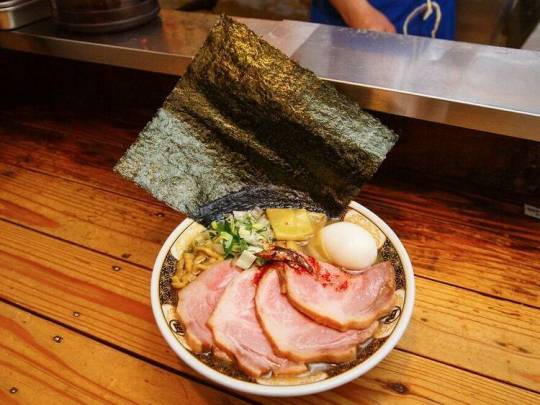
View On WordPress
#Afuri Kara Kurenai Shinjuku Subnade#Konjiki Hototogisu#Kuliner Jepang#Restoran Terbaik Jepang#Shin#Shinjuku Kappo Nakajima#Shinjuku Lambne#Sugoi Niboshi Ramen Nagi Shinjuku Golden Gai#Tachan#Tempura Shinjuku Tsunahachi#tokyo#Tsukemen Gonokami Seisakusho#Wisata Kuliner Jepang#Yasubee
0 notes
Photo
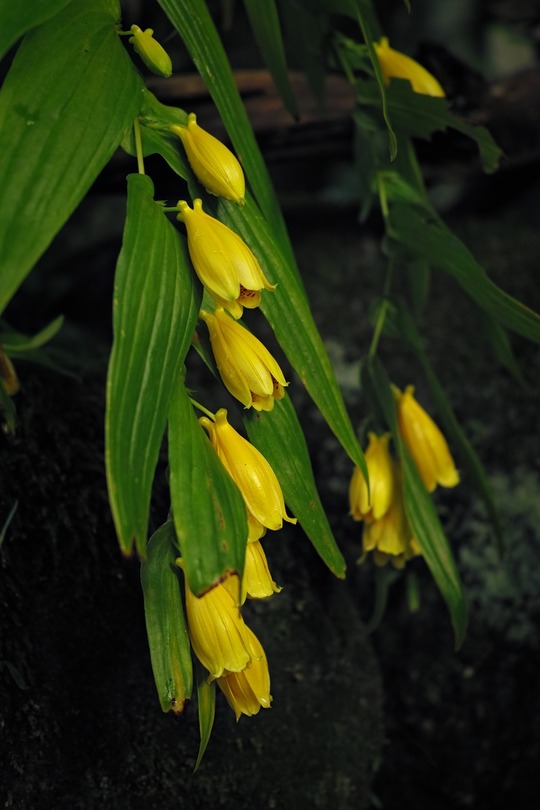
紀伊上臈杜鵑草[Kiijōrōhototogisu]
Tricyrtis macranthopsis
紀伊[Kii] : Former name of Wakayama Prefecture, 紀州[Kishū]
https://en.wikipedia.org/wiki/Kishu
上臈[Jōrō] : Noble woman
杜鵑草[Hototogisu] : Tricyrtis hirta
17 notes
·
View notes